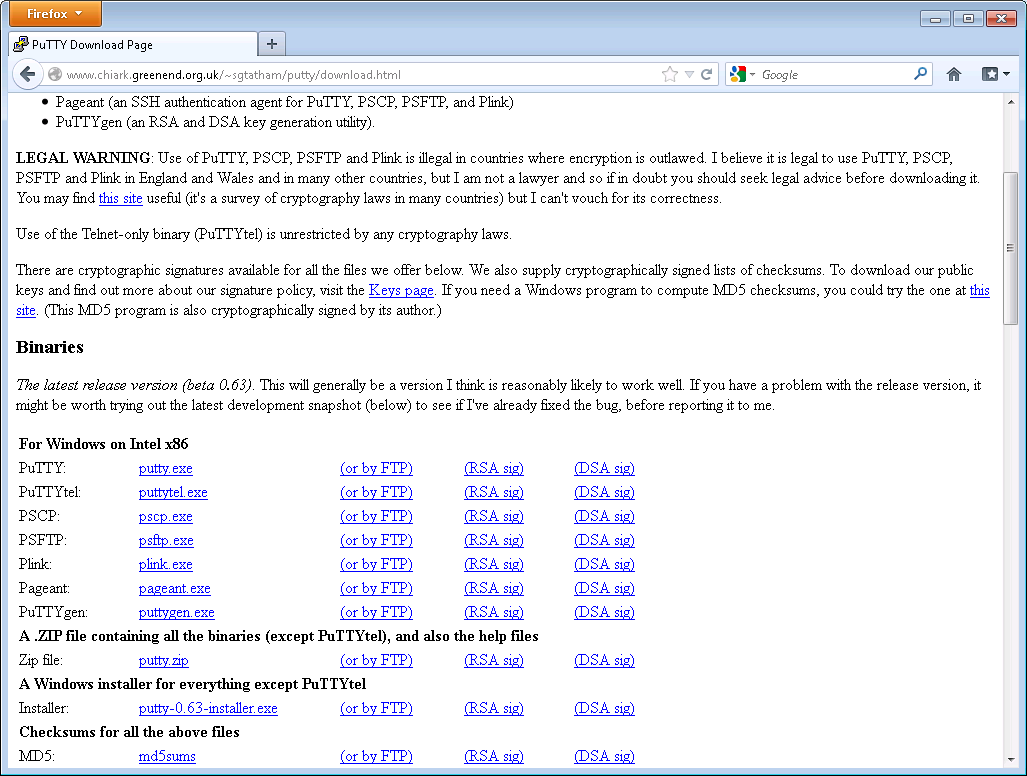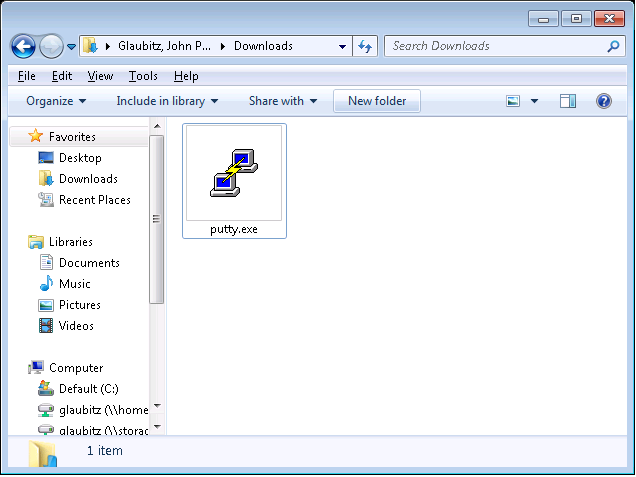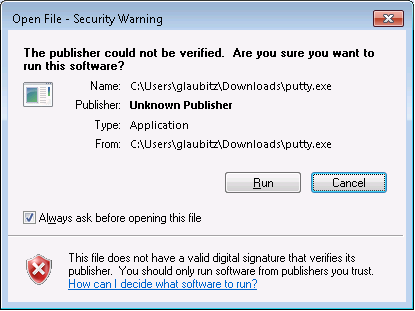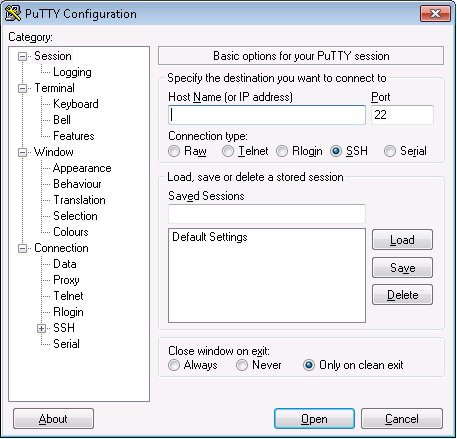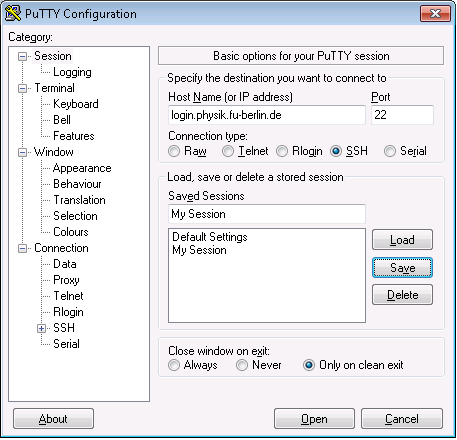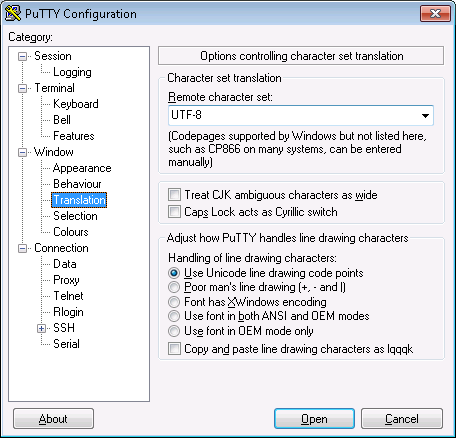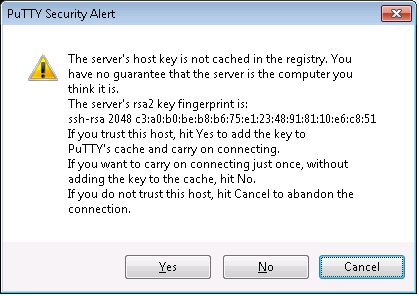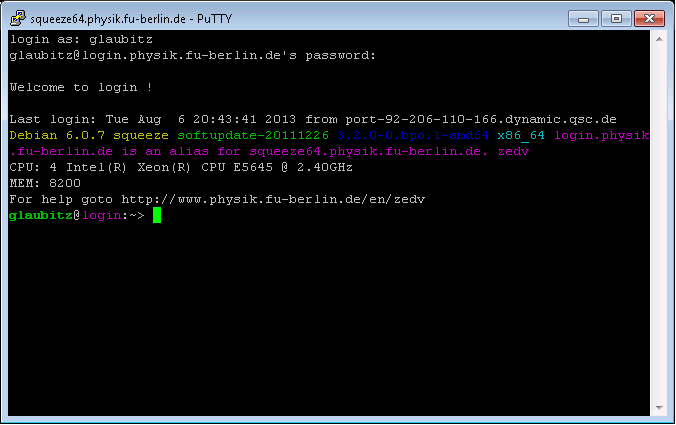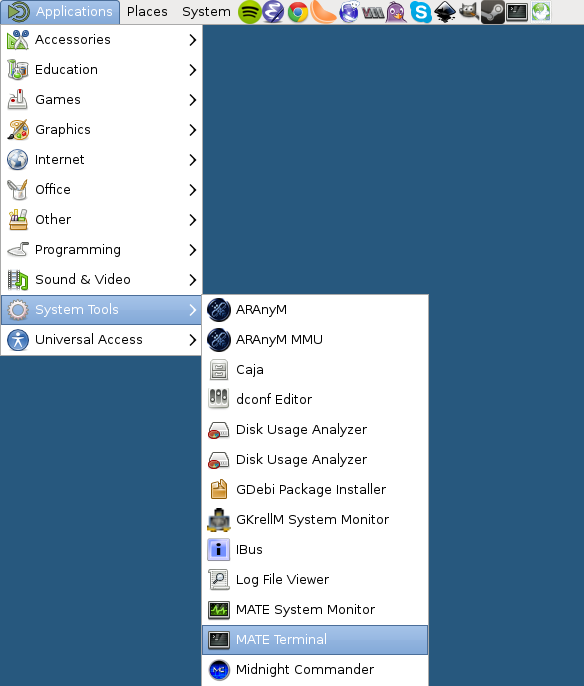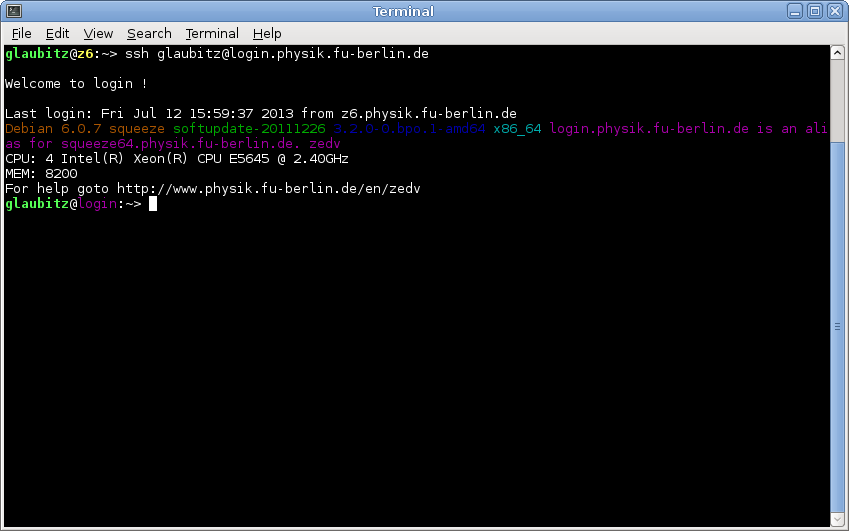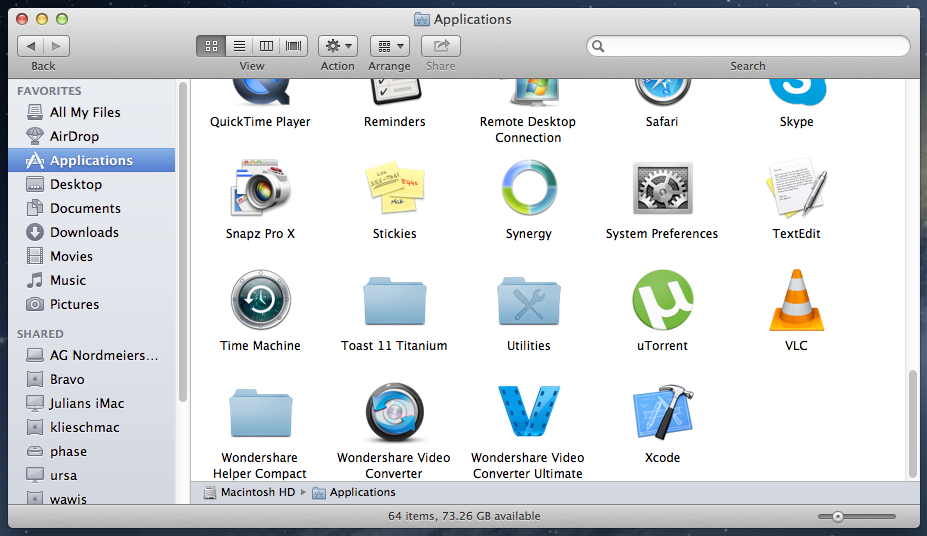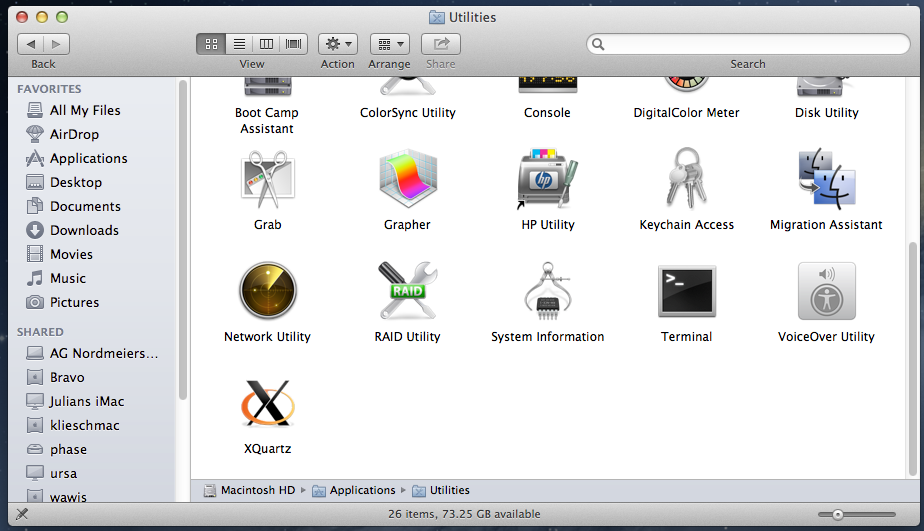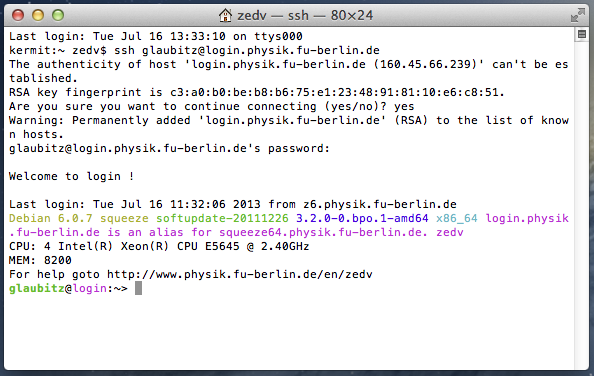Table of Contents
Connecting to a Linux computer using SSH from a Windows computer (text mode interface)
Open your web browser and navigate to the PuTTY client download website here:
Click on "putty.exe" to download the PuTTY client to your download folder.
Open your download folder and double-click putty.exe:
Windows will pop up the following dialog to ask you whether you trust the application you just downloaded from the PuTTY website, click Run:
The main window of the PuTTY client will open and show a dialog to configure a new session upon first start:
Use "Saved Sessions" to name this session for later reference, type the name of the computer you want to connect to into the field "Host Name (or IP address)" (login.physik.fu-berlin.de in this case), click Save:
In the left hand side of the PuTTY window, click Translation below the item Window and make sure Remote character set is set to UTF-8, then click Open to make a connection:
You will be asked whether you trust the remote host, click Yes. This dialog will be shown upon the first connection only:
A terminal will open and ask for your username and password, your login should complete successfully:
Connecting to a Linux computer using SSH from a Linux computer (text mode interface)
Many software applications on Linux are designed in a way that they can be used using a text mode interface only. This means, there is no graphical user interface which is operated with a mouse or a touchscreen but just a command prompt which takes single text commands which can be combined with options and parameters.
To connect to a remote computer running Linux through SSH from a computer running Linux, first navigate through your Applications menu, find the System Tools submenu and click Mate Terminal.
The terminal window should open similar to the following picture. To establish an SSH connection to a remote Linux computer at the department, type:
ssh username@computer.physik.fu-berlin.de
It is highly recommended to use the computer login since it is a machine guaranteed to be running 24/7 and has enough hardware ressources to be used by several users simualtanously for login.
Thus:
ssh username@login.physik.fu-berlin.de
The SSH command has some additional, useful options:
- -x - disable X forwarding
- -X - enable X forwarding (allows to run remote graphical applications); use together with -C
- -C - enable compression; use this when enabling X forwarding
Connecting to a Linux computer using SSH from a Mac computer (text mode interface)
Any Mac computer running MacOS X brings everything you need to connect to a Linux computer using SSH. The ssh command is built in and can be run from the Terminal application.
First, open Finder and navigate to your Applications folder, look for the sub-folder Utilities and open it by double-click:
In the folder Utilities, search for the Terminal application and double-click it:
This should open a terminal window. In the terminal window, type:
ssh username@login.physik.fu-berlin.de, followed by pressing <ENTER> and your password and <ENTER>. If asked whether you want to trust the remote computer, type "yes" and press <ENTER>:
You're now logged in to the primary login computer at the Physics department.

